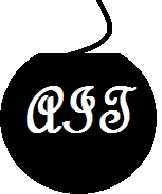Boiler repair practices
Heat treatment requirement for butt welding of tubes / pipes
Metal working results in distortion of grain structure. A weldment also results in different grain structure at different distance from weldment.
A WELDING MAY GO WITH ANY OF THE FOLLOWING HEAT TREATMENT PROCESSES
- Preheating
- Inter-pass temperature control
- Post heating or delayed cooling
- Post weld heat treatment
Chemistry of material, thickness of material & type of joints decide the type of heat treatment
Why Preheat?
Preheat reduces the temperature differential between the weld region and the base metal
- Reduces the cooling rate, which reduces the chance of forming martensite in steels
- Reduces distortion and shrinkage stress
- Reduces the danger of weld cracking
- Allows hydrogen to escape
Using Preheat to Avoid Hydrogen Cracking
Interaction of Preheat and Composition
Why Post-Weld Heat Treat?
- The fast cooling rates associated with welding often produce martensite
- During post-weld heat treatment, martensite is tempered (transforms to ferrite and carbides)
- Reduces hardness
- Reduces strength
- Increases ductility
- Increases toughness
- Residual stress is also reduced by the post-weld heat treatment
Preheating methods
Gas rings / muffle furnace ( at factory)
Electrical resistance heaters ( at site)
Induction heating ( at factory)
Oxy acetylene or other gas torches (at site)
Post weld Heat Treatment and Hydrogen Cracking
Post weld heat treatment (~ 1200°F) tempers any martensite that may have formed
Increase in ductility and toughness
Reduction in strength and hardness
Residual stress is decreased by post weld heat treatment
Rule of thumb: hold at temperature for 1 hour per inch of plate thickness; minimum hold of 30 minutes
Post weld heating methods
Gas rings / muffle furnace ( at factory)
Electrical resistance heaters ( at site)
Induction heating ( at factory)
Weld should be free of grease, oil , chloride and sulfur bearing compounds.
Heat band should cover 3 times weld thk / material thk.
Post weld heat treatment must be monitored with temperature recorders.
Material and P No Grouping
Girth Butt Weld Tube and Pipe Diameter <=108 mm (dissimilar) applicable for thickness 19 mm for P1 ABC and thickness up to 13 mm for others Material





